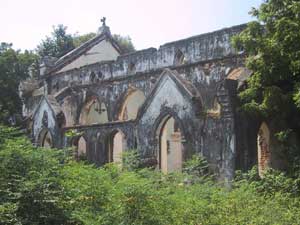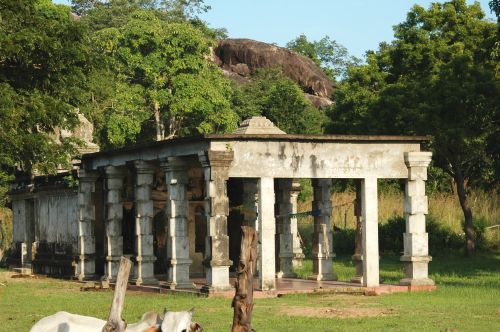Ilankai Tamil Sangam30th Year on the Web Association of Tamils of Sri Lanka in the USA |
||||||
 Home Home Archives Archives |
What 'Responsibility to Protect' Means for Tamilsby Kanthavanam, Tamil Guardian, September 13, 2007
Though only recently invested in international law, the world is already facing a rhetoric-implementation gap on R2P. Recent calls, such as outlined in a International Crisis Group (ICG) report setting out the case for international intervention in Sri Lanka, couched in the language of the doctrine ‘Responsibility to Protect’ or ‘R2P’, is a far cry from its embryonic use in Serbia where the wishes of the Kosovan Albanian community have been taken up by the most powerful states. As an emerging doctrine in international relations, R2P defines the responsibility of states to protect populations from grave crisis and to react to such crisis wherever they occur. R2P was formerly adopted by the United Nations (UN) in 2005 in the midst of the crisis in Darfur, following its emergence as the doctrine behind NATO’s assault on Serbia in 1999 to protect the Kosovans.
However since Kosovo, the architects responsible for framing the legality of the R2P doctrine have aimed to limit such intervention to “tackling the crisis by formulating responses and solutions” that work by nevertheless maintaining the territorial integrity of the offending state. R2P sets out in international law the primary responsibility that states have in protecting their own populations, whilst conferring an onus on the international community to act when these governments fail to protect the most vulnerable. However, though only recently invested in international law, the world is already facing a rhetoric-implementation gap on R2P. Put loosely, states wishing to implement the doctrine are too often likely to do so for divergent and self-serving reasons, so whilst the theory is sound, implementation is often weak or skewed. Countries like the US may cite its obligation under R2P to intervene to overthrow regimes which it cites as ‘harbouring terrorists’ or to ‘protect’ a government at threat of loosing a war to ‘terrorists’ or that has extremist views.
The same policy however, was not used against governments similar to the Pinochet regime in Chile which killed large numbers of people conveniently labelled as communists. The regime was warmly supported by the US and UK. The US and other western states, without irony, condemn China which has until recently opposed high-level external intervention in Sudan’s Darfur where killings, which many described as genocide, are still ongoing, years after the crisis began. Therefore, opposition to and manipulation of international law and binding UN resolutions means that questions of intervention become more politico-legal and are not as clear cut as advocates of external intervention on behalf of human rights might hope. Despite the responsibilities of states and the obligations of the international community being clearly stated in the resolutions permitting intervention under R2P, this still occurs. Consequently intervention by the UN or other UN-authorized forces often becomes bogged down in the political dynamics of the offending state. In other words, it depends on what current international paradigm the state in question invokes as its defence. These days it is usually the ‘War on Terror’ – during the Cold War it used to be ‘fighting communism’’ It also depends on the state’s allies - if particularly influential or UN veto-holding states are friendly with the accused government - and how long the state resists pressure to consent to a UN presence in their country. Under most aspects of international law the UN may not enter the country unless the recognized government grants permission. Which is why action without the state’s consent is termed ‘intervention.’ Therefore, if as some are arguing, the time has come for R2P to be used in Sri Lanka, the question becomes which organization or nation(s) would intervene; what are their motivations, and what would the outcome be? It is well known and documented that successive Sri Lankan Governments have and continue to undertake acts of violence against the Tamil community. Most manifestly the state not only failed to protect Tamil civilians from Sinhalese mobs in ‘Black’ July 1983, it actively supported the pogrom. It did so whilst receiving undisturbed political and financial support from the international community. Contrast this to Pakistan which was promptly expelled from the Commonwealth when President Musharraf overthrew the elected government of the day – whatever effect that had. In the Sri Lankan context, the rhetoric-implementation gap is clear. With the mountain of evidence strongly showing the extra-judicial violence undertaken by Sri Lankan security forces; the proliferation of paramilitaries, ethnic cleansing and colonisation, etc, intervention can be argued under international law as necessary. Take instances such as the denial of food for three months to the people of Vaharai during the Army’s siege of the region last year, reminiscent of tactics from the Balkans in the 1990s. It took massive international pressure to get one convoy in – and only half the trucks got through then. Therefore, it should be theoretically possible to gain a UN resolution backing intervention to protect Tamil civilians. However, there have not been any serious follow up by the international community with credible explorations as to the implementation of R2P. Instead international support for Sri Lanka is continually extended under the rubric of the ‘War on Terror’, not least through new proscriptions of the LTTE and the arrest of Diaspora Tamils as ‘terrorist supporters.’ By contrast, NATO, even without a UN mandate in Kosovo, was willing to bomb Serbia to stop the genocide, in effect supporting the Kosovo Liberation Army (KLA) in its fight against the Serbian military. On the whole though, given in the current international climate around the ‘war on terror’, the containment policy of the US and others towards the LTTE specifically, obtaining any UN Security Council approved intervention to safeguard the Tamil people is an impossibility. In any case, what we are seeing is a strong resistance to external pressure on human rights by the Rajapakse regime and indeed other Sinhala parties, such as the UNP, who are either seeking to delay foreign intervention for as long as possible or restricting it to minor ‘reforms of the state’. This is clearly evident in Sri Lankan ministers’ confident attacks on leading UN officials, including denouncing them as ‘terrorists’, whenever they protest human rights or humanitarian breaches by the government. The stark difference between rhetoric and implementation of R2P and opposition to intervention by key states is not uncommon - UN intervention in Kosovo was vetoed by Russia, citing opposition to UN interference in the ‘internal affairs’ of its friend and long time ally, Serbia. This continues to today with Serbian-Russian opposition to an independent Kosovo. Rather than coming to champion the rights of the Tamil people to self-determination, as with Kosovo, the most generous international intervention will be the imposition of a minimal solution that will maintain the territorial integrity of Sri Lanka, whilst militarily defeating the LTTE. This can be seen with the suggestion by the European Union that, despite the Rajapakse regime’s unabashed rejection of a negotiation process, the Tamil National Alliance (TNA) should come up with its own proposal for a solution to the conflict. This is nothing more than another attempt to isolate the LTTE from any future peace process or settlement and further weaken the Tamil polity. In any case, if the Sinhalese establishment is sincere about undertaking the type of reforms the international community envisages, would it not have done so by now? If the international community sincerely wanted an inclusive peace process and a federal solution that, whilst maintaining the territorial integrity of Sri Lanka also gives Tamils a genuine stake in and ownership of the political process, why did they continue to aid the state despite its refusal to honour the PTOMS agreement or continue negotiations on the interim administration for the Northeast? Sri Lanka’s post-independence history shows that Tamils have no stake in the Sinhala project that is the Sri Lankan state. This is why the Tamil struggle came about. Amid the multi-faceted brutality being visited on our people, the time has come to realise our right to rule ourselves in an independent state. If international intervention is to take place in Sri Lanka it should mirror the Kosovo intervention, recognizing the crimes being committed against our people and accepting that independence from Sinhala rule is the only solution for the Tamil question. |
|||||
|
||||||

